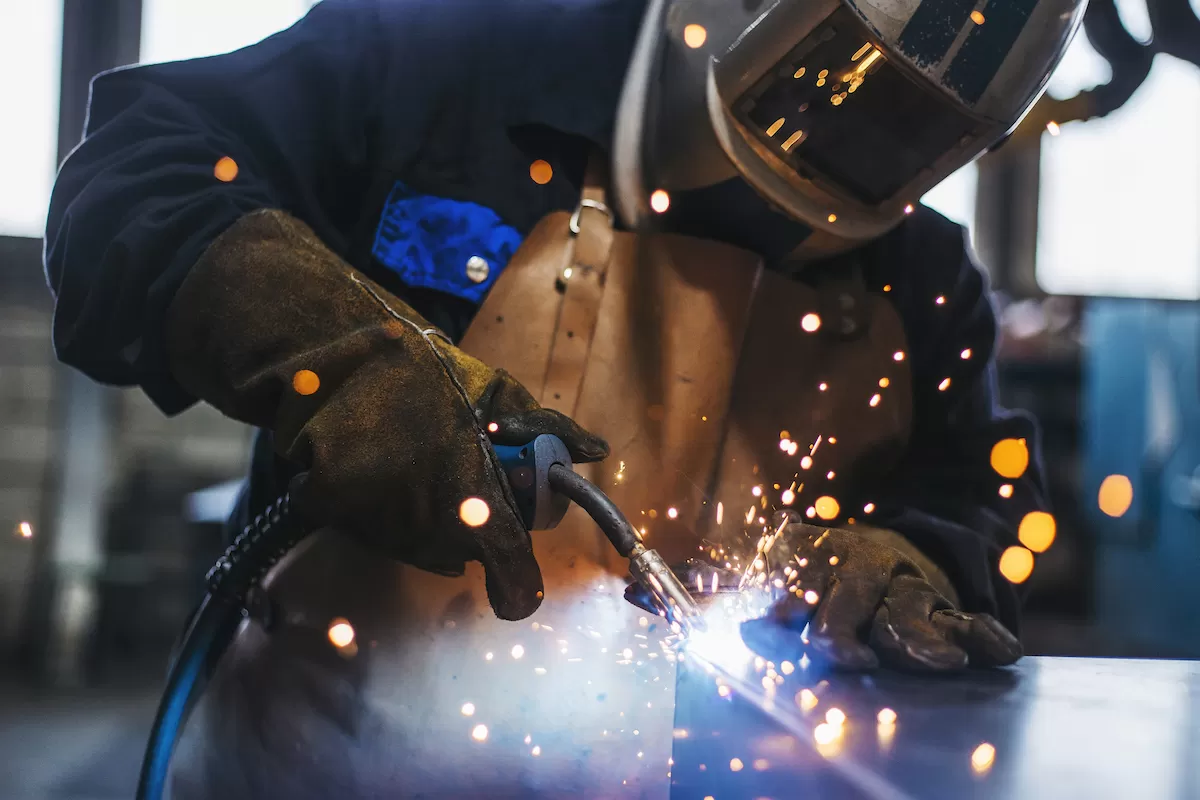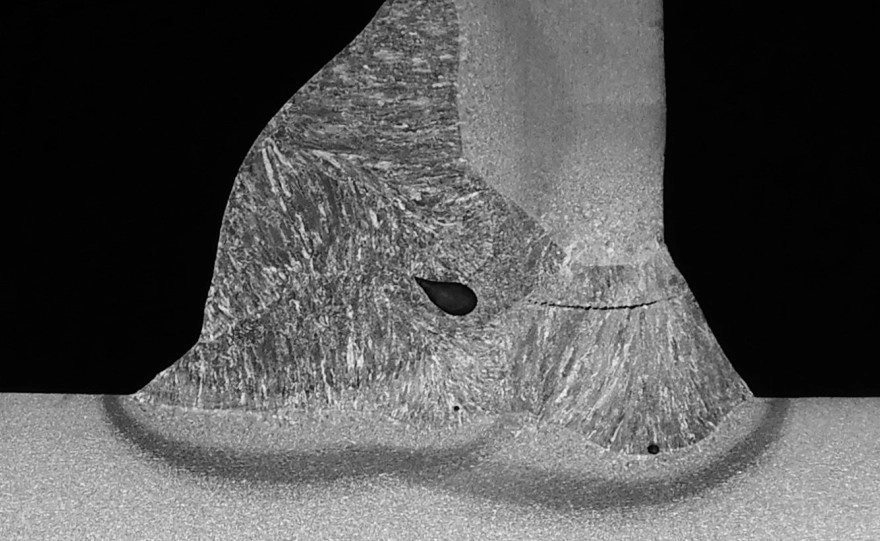Common Causes of Cracking in Tack Welds
Cracking in tack welds is a common challenge that can compromise the strength and quality of metal fabrication projects. Understanding the root causes helps prevent costly rework and maintain structural integrity. Here are the main factors that lead to cracking in tack welds:
Thermal Stress from Rapid Heating and Cooling
Tack welds involve quick heating, which causes metal to expand rapidly. When the heat source moves or cools down too fast, the shrinkage creates stresses in the weld area. This thermal stress can cause cracks, especially in thin materials or those sensitive to temperature changes.
Material Mismatches
Using incompatible materials or filler metals is another major cause. When base metals and fillers have different thermal expansion rates or chemical properties, stresses develop during welding. This mismatch increases the risk of cracks forming in the tack welds.
Improper Weld Techniques
Poor welding practices, such as incorrect heat input, wrong welding speed, or insufficient shielding gas, often result in weak tack welds. Lack of proper penetration or uneven weld beads makes the joint vulnerable to cracking under stress.
Environmental and Contamination Factors
Contaminants like rust, oil, dirt, or moisture on the metal surface interfere with weld quality. These impurities cause porosity and uneven fusion, which become weak points in the tack weld. Environmental conditions such as wind or humidity during welding can also affect weld cooling and crack formation.
By addressing these causes, welders can significantly reduce the chance of cracking and improve the durability of every tack weld.
Proven Techniques to Prevent Cracking in Tack Welds

Preventing cracking in tack welds starts by controlling a few key factors throughout the welding process. Here’s how to keep your tack welds solid and crack-free:
Optimize Heat Input and Cooling
- Avoid overheating the metal by using the right heat settings—too much heat can cause thermal stress.
- Control the cooling rate by allowing the weld to cool gradually, which reduces the chance of cracks forming.
- Preheating thick or hard-to-weld metals can help minimize temperature differences.
Select Compatible Materials
- Use materials with similar thermal expansion rates to avoid stress from mismatched metals.
- Choose the proper filler metal to ensure good bonding with the base metals.
- Check for alloy compatibility to prevent weak spots.
Improve Tack Weld Technique
- Keep tack welds short and consistent to minimize stress points.
- Make sure tack welds penetrate enough to hold parts firmly without causing distortion.
- Avoid stacking tacks too close to prevent overlapping heat zones.
Leverage Proper Weld Preparation
- Clean surfaces properly by removing rust, oil, and dirt to prevent contamination.
- Ensure weld joints are properly aligned to reduce stress during welding.
- Use fit-up tools if needed to maintain a gap that allows for thermal expansion.
Post-Tack Inspection and Reinforcement
- Inspect tack welds visually right after welding to catch cracks early.
- Use non-destructive testing (NDT) methods when necessary for a deeper look.
- Reinforce tack welds with a final continuous weld if the application demands extra strength.
Using these proven techniques helps you avoid weld imperfection solutions and keeps your metal fabrication quality on point. Following tack welding best practices in this way leads to stronger, more reliable welds.
The Role of Precision CNC in Crack-Free Tack Welding
When it comes to preventing cracking in tack welds, precision matters a lot. That’s where CNC technology steps in. With the exact control CNC offers, welds are cleaner, more consistent, and less prone to the thermal stresses that cause cracks.
How HYCNC Enhances Weld Quality
At HYCNC, we use cutting-edge CNC machines to ensure every piece is perfectly prepared before welding. This precise shaping and fitting reduce gaps and mismatches, which are common causes of tack weld cracking. Better fit-up means less strain during welding and a stronger tack connection right from the start.
Advanced Equipment for Consistent Results
Our advanced CNC equipment maintains tight tolerances and smooth finishes, so once the tack weld is applied, the metal behaves predictably under heat. This consistency helps minimize welding defects and eliminates weak spots that can turn into cracks later.
Partnering with HYCNC for Fabrication Success
Working with HYCNC means you get a partner who understands how to prevent weld imperfections from the ground up. We deliver precision-cut materials ready for smooth, crack-free tack welding. If you want to ensure high-quality fabrication with fewer issues down the line, HYCNC’s CNC services are a smart move for your next project.
For more tips on improving your metal fabrication quality, check out our guide on preventing rust in sheet metal fabrication.
Inspection and Quality Control for Tack Welds
To prevent cracking in tack welds, thorough inspection and quality control are essential. Here’s how to ensure your tack welds hold strong:
Visual Inspection Best Practices
Start with a clear visual check. Look for cracks, gaps, or irregularities in the tack weld. Use good lighting and clean the weld area before inspection. Small defects caught early can save a lot of trouble later.
Non-Destructive Testing
For a deeper look, use Non-Destructive Testing (NDT) methods like ultrasonic testing or dye penetrant inspection. These help spot hidden cracks or internal flaws without damaging the part. NDT is a great tool to verify the integrity of tack welds, especially in critical metal fabrication.
Compliance with Industry Standards
Make sure your inspection process follows industry standards like AWS or ASME codes. These guidelines define acceptance criteria for weld quality. Meeting these standards helps ensure your tack welding is up to the mark and minimizes the risk of weld imperfections.
By combining visual inspection with NDT and following proper standards, you can confidently prevent tack weld cracking and deliver consistent quality in your fabrication projects.
Common Mistakes to Avoid in Tack Welding
Avoiding cracking in tack welds starts with steering clear of common welding mistakes. Here are the key errors to watch out for:
- Using too much heat too fast: Applying excessive heat can cause thermal stress and cracking. Always control your heat input and avoid rapid cooling.
- Poor weld joint preparation: Dirt, rust, or oil on the surfaces can weaken the tack weld. Clean and prep your metal before welding.
- Ignoring material compatibility: Mismatched metals or filler metals can cause cracking. Use compatible materials and filler metal selections.
- Skipping preheating when needed: For thicker or high-carbon metals, preheating is important to reduce thermal shock and stress on tack welds.
- Inconsistent tack weld placement: Uneven tacks lead to uneven stress distribution, increasing cracking risk. Space tack welds consistently.
- Not inspecting tack welds before full welding: Missing early cracks or weak points can cause bigger weld failures later. Use visual checks and, when appropriate, non-destructive testing.
- Rushing the process: Tack welding is a step that needs care. Rushing can lead to poor weld quality and cracking.
By avoiding these common mistakes and following proper tack welding best practices, you’ll significantly reduce the chance of cracking and improve overall weld quality.
FAQs
What causes cracking in tack welds?
Cracking usually comes from rapid heating and cooling, mismatched materials, poor welding techniques, or contamination on the joint surface.
How can I prevent cracking in tack welds?
You can prevent cracks by controlling heat input, choosing compatible materials, preparing the weld properly, and inspecting tack welds before moving forward.
Does preheating help with tack weld cracking prevention?
Yes, preheating slows down cooling and reduces thermal stress, which lowers the risk of cracking.
What role does CNC precision play in tack welding?
CNC equipment ensures consistent, accurate welds by controlling heat and placement, which helps reduce imperfections and cracking.
Is non-destructive testing necessary for tack welds?
For high-quality, critical welds, NDT is recommended to catch cracks or defects early without damaging the part.
What are common tack welding mistakes to avoid?
Avoid excessive heat, poor joint fit-up, dirty surfaces, and rushed weld timing to reduce cracking risks.
For more tips on maintaining weld quality and preventing issues like rust, check out our guide on preventing rust in metal fabrication.




